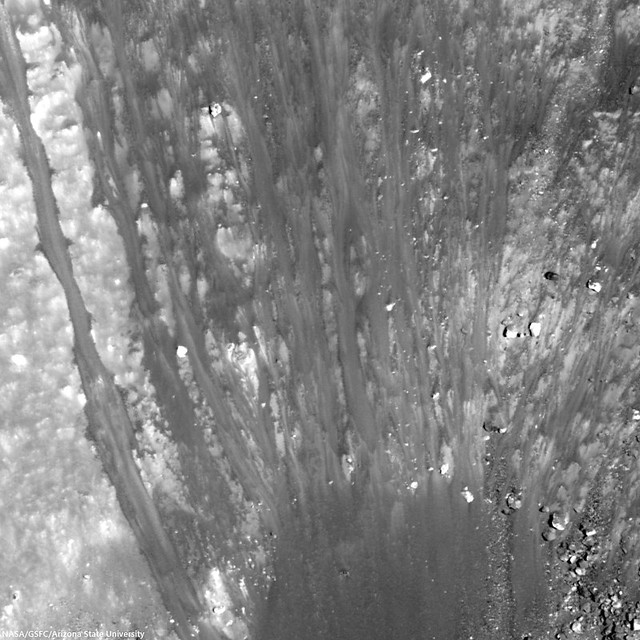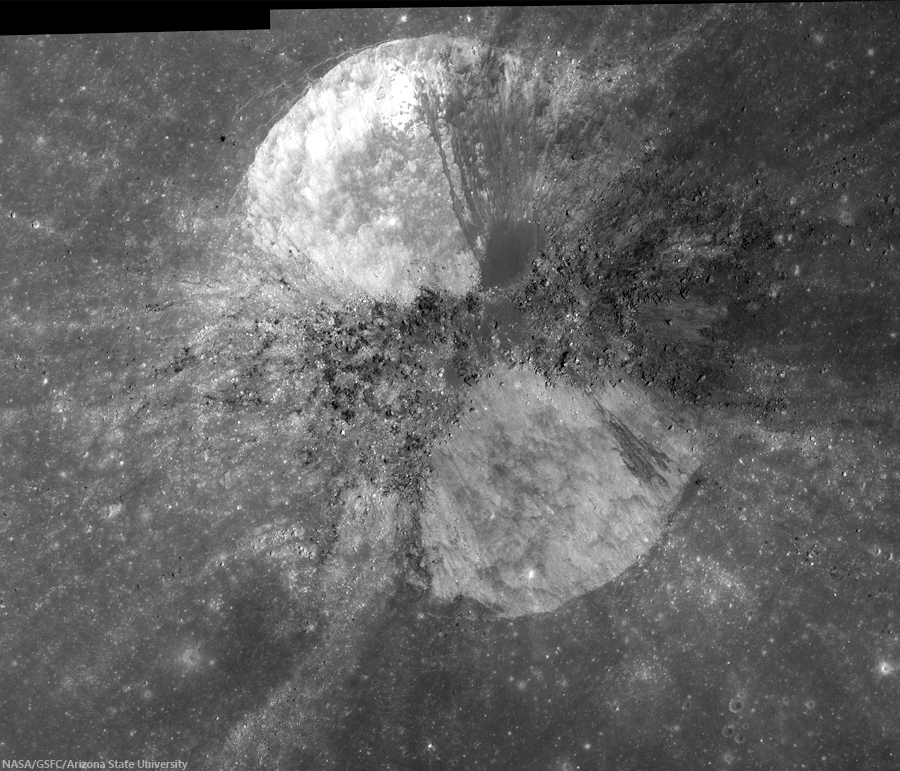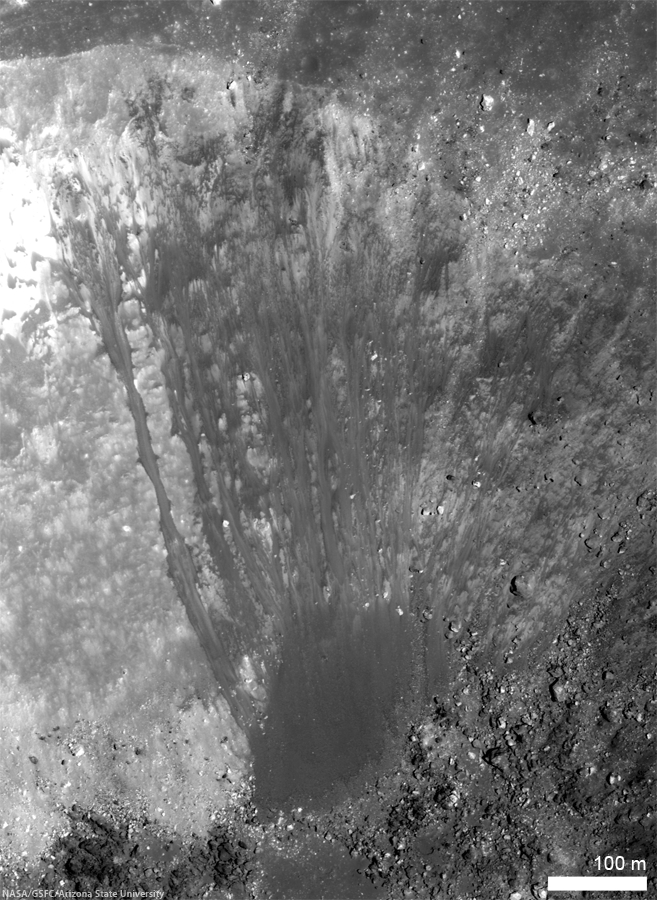 |
| Multiple dry debris flows along the wall of Schubert A crater. LROC Narrow Angle Camera (NAC) observation M141743432L, spacecraft orbit 6022, October 15, 2010, slew 2° under 15.2° solar incidence, resolution 48 cm per pixel from 41.92 km over 1.49°S, 94.2°E, image field of view 420 meters [NASA/GSFC/Arizona State University]. |
J. Stopar
LROC News System
A 2.2-km diameter crater, Schubert A (2.135°N, 79.341°E), has steep walls, up to ~30° in slope. These steep walls are susceptible to gravity-driven mass wasting events.
Mass wasting is a geologic process that acts on all planetary surfaces to erode or degrade landforms over time, and results from the downslope movement of rocks and soil under the influence of gravity.
On the Moon, the slope of a surface is a key influencing factor: the steeper the slope, the faster mass wasting occurs. Mass wasting is typically triggered by nearby moonquakes, some caused by impact events.
Mass wasting on the Moon can take many forms from rockfalls, the plummeting of a few boulders, to rock avalanches and landslides. Material moving downslope in a fluid-like manner is often called a debris flow. And even though water is not required to cause debris flows, the resulting landforms resemble rivers of rock particles. At the base of the slope where mass wasting occurs, a mound of material piles up, called a talus deposit. The portion of Schubert A crater shown in the opening image exhibits the scars of many dry debris flows terminating in a mounded talus deposit, near the base of the crater floor.
This talus deposit appears to be size or density sorted, with coarse material in the lower unit and a patina of finer materials on top. Perhaps a coarser mix of material was dislodged from the crater wall initially, as the result of a triggering event, while finer material continued to slide downslope after the main failure.
Explore these debris flows in the full resolution NAC, HERE, and see if you can figure out why they are so dark (hint: look for materials eroding from near the crater rim).
Related LROC Posts:
It's All Downhill From Here (November 12, 2013)
Lobate Debris Aprons on the Moon (February 28, 2013)
Bounce, Roll and Stop (October 24, 2012)
Recent Debris Flow (October 3, 2012)
A Recent Journey (February 7, 2012)
Tendrils in Reiner Crater (August 8, 2011)
Bouncing, Bounding Boulders! (October 15, 2009)
LROC News System
A 2.2-km diameter crater, Schubert A (2.135°N, 79.341°E), has steep walls, up to ~30° in slope. These steep walls are susceptible to gravity-driven mass wasting events.
Mass wasting is a geologic process that acts on all planetary surfaces to erode or degrade landforms over time, and results from the downslope movement of rocks and soil under the influence of gravity.
On the Moon, the slope of a surface is a key influencing factor: the steeper the slope, the faster mass wasting occurs. Mass wasting is typically triggered by nearby moonquakes, some caused by impact events.
 |
| Subsampled NAC mosaic showing Schubert A in entirety, LROC NAC mosaic M141743432LR crater is 1.88 km in diameter [NASA/GSFC/Arizona State University]. |
 |
| Northeast wall of Schubert A crater displays the traces of numerous dry debris flows terminating in a talus deposit near the base of the wall. LROC NAC mosaic M141743432LR [NASA/GSFC/Arizona State University]. |
 |
| Talus deposit is size or density sorted, with coarser materials on the bottom (black arrow) and finer materials on top (white arrow). LROC NAC mosaic M141743432LR [NASA/GSFC/Arizona State University]. |
Related LROC Posts:
It's All Downhill From Here (November 12, 2013)
Lobate Debris Aprons on the Moon (February 28, 2013)
Bounce, Roll and Stop (October 24, 2012)
Recent Debris Flow (October 3, 2012)
A Recent Journey (February 7, 2012)
Tendrils in Reiner Crater (August 8, 2011)
Bouncing, Bounding Boulders! (October 15, 2009)


No comments:
Post a Comment